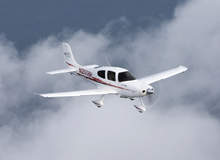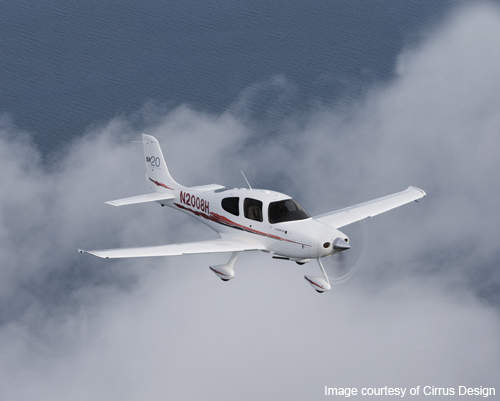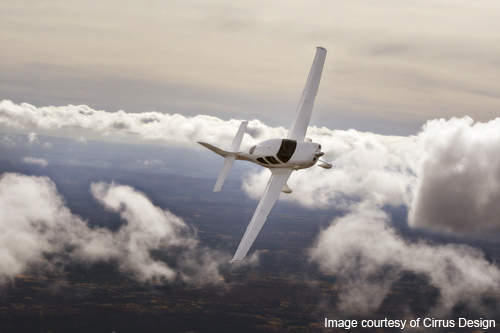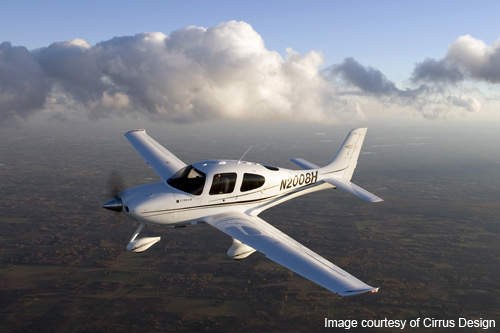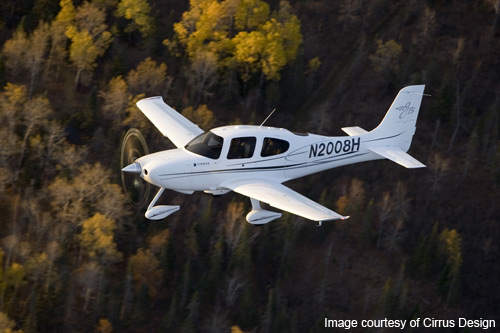Launched in 1999, the SR20 is a general aviation aircraft manufactured by Cirrus design. The aircraft was certified by the Federal Aviation Administration (FAA) in October 1998.
2,016 SR20 aircraft have entered service. The aircraft became the first of its kind to receive the European Aviation Safety Agency (EASA) certificate in June 2004.
SR20 variants
The Cirrus SR20 aircraft is available in three models GTS, GS and S. The SR20 S and SR20 GS come in a single colour exterior, base white. The SR20 GTS comes in three exterior colours – base white, crimson and iridium. The S variant has a total weight of 2,093lb, while the GS and GTS versions weigh 2,144lb and 2,167lb respectively. The strip packages for SR20 S and SR20 GS are “Matador” and “Red Dusk” respectively while the interiors are made of slate fabric for both the variants. For the SR20GTS variant, the strip package is of “Garnet” and the interior is made of slate leather.
The SR20 can be customised to an X edition. Available on the SR20 GS and SR20 GTS models, the X edition features premium exterior and interiors, including customised interiors. In a typical X edition SR20, the instrument panel and centre consoles are coated with carbon fibre and machine-finished aluminium. Cabins are covered in leather with tailor-stitched accents and comfortable seats made up of Alcantara materials.
SR20 orders and deliveries
In January 2006, four new Cirrus SR20 aircraft were delivered to UND Aerospace, which deployed the aircraft for student training.
In January 201, Purdue University’s Department of Aviation Technology procured 16 Cirrus SR20 aircraft to execute training programmes.
Design
The SR20 has a capacity of four and measures 26ft (7.92m) in length and 8ft 11in (2.71m) in height. The aircraft has a cantilever-design wing spanning 38ft 4in. The cabin is 49in wide and 130in long.
The aircraft is designed carry a maximum gross weight of 3,050lb (1,386kg) and has a standard empty weight of 2,080lb (945kg), useful load of 970lb (441kg), usable fuel capacity of 56gal/336lb (212l/153kg) and a full-fuel payload of 634lb (288kg).
The aircraft includes a ballistic parachute system and four-point shoulder harnesses with built-in air bags for the pilot and the co-pilot. The parachute system, known as the Cirrus airframe parachute system (CAPS), is a solid fuel rocket motor-deployed 17m parachute designed by BRS in association with Cirrus. The parachute can be deployed by pulling its overhead handle.
Cabin
The SR20 aircraft has a 130in-long (330cm) cabin. The width and height of the cabin measure 49in (124cm) and 50in (127cm) respectively.
Easy entry and exit to the cabin are allowed through oversized doors that are fitted on either side of the aircraft along with tilted windows at the rear.
SR20 avionics
The SR20 has a completely digital avionics suite. The cirrus perspective avionics includes a keyboard controller, dual 12in screens, dual communication / navigation / WAAS GPS, engine and fuel monitoring system, flite charts, S-tech 55 X autopilot, mode S-transponder, 406MHz ELT, GFC 700 autopilot / dual AHRS, perspective EVS and chart view.
All the critical weather information including next-generation radar, METARs, TAFs, AIRMET (airmen’s meteorological information), SIGMET (significant meteorological information), TFR (terrain-following radar), winds aloft, freezing levels and lightning is provided via an XM weather data link. A Stormscope WX-500 enables detection of every type of lightning including ground-based strikes and cloud-to-cloud strikes.
The aircraft is also equipped with a synthetic vision technology that provides a three dimensional view of the outside. Any terrain warnings, obstacles, traffic, flight path marker, zero pitch line, runways, airport signs and the “highway-in-the-sky” or pathway guidance can be easily identified through the use of the synthetic vision technology.
Engine and performance
The aircraft is powered by a Continental IO-360-ES piston engine. Rated at 200hp, the six-cylinder fuel-injected engine with a tuned exhaust system is equipped with a three-blade propeller manufactured by Hartzell.
The SR20 is able to fly at high altitudes. It can take off at a height of 1,478ft (450m) and operate up to a ceiling of 17,500ft, with a climb rate of 828ft/min. When over 50ft high objects, the aircraft’s take-off height is 2,221ft (677m).
The aircraft flies at up to 155ktas at 75% power. While still in air, it can cruise approximately 785nm with a 55% power reserve. The aircraft’s stall speed is 56kt calibrated airspeed (KCAS) with flaps.
The SR20 requires fairly long landing rolls after landing – 853ft and 2,636ft when landing over 50ft objects.

